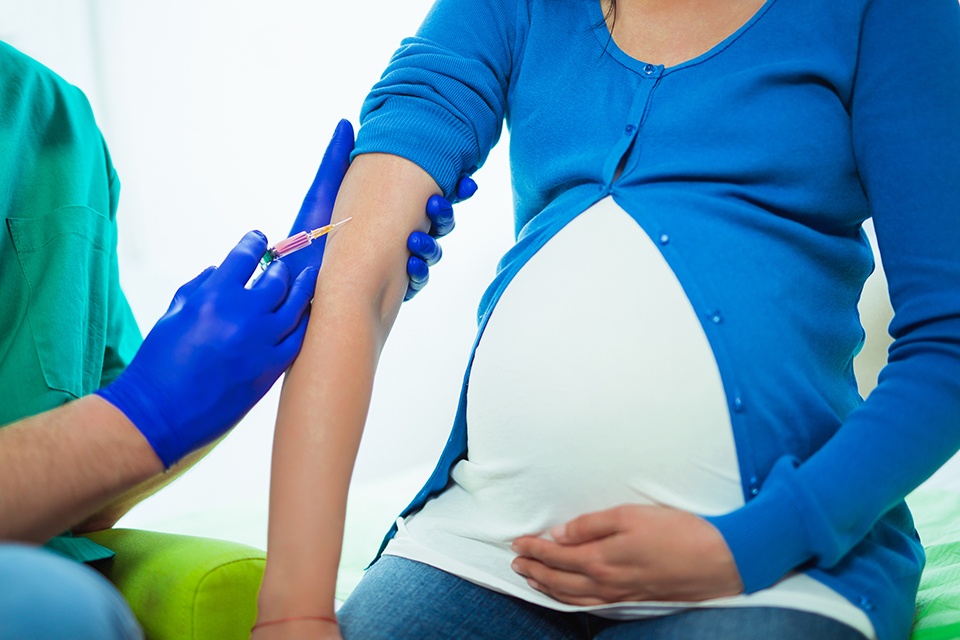
Researchers from the Stevens Institute of Technology have recently created a wearable device that allows pregnant women to extract their baby’s heartbeat. This technology is a non-invasive patch that has performed more effectively than any other fetal heart rate monitor on the market. The researchers’ goal with this device is to allow pregnant women to continuously monitor their children and detect abnormalities as early as possible, decreasing the likelihood of stillbirth. This device was created by the laboratory of Negar Tavassolian, an associate professor who led this work at Stevens Institute of Technology. Further collaboration on the research was provided by first author Chenxi Yang, a graduate student at Stevens, and Bruce Young and Clarel Antoine, two OB-GYNs at New York University-Langone Medical Center.
The device uses the same type of sensors that smartphones use to rotate horizontally or vertically to sense vibrations from the mother’s stomach. Being that fetal activity causes the stomach and abdomen of the mother to vibrate, the researchers hypothesized that sensors could be used to analyze these vibrations to detect the heartbeat of the fetus.
“We record the vibrations of the abdominal wall and trace the recording back to the fetal heart movements, so we get the mechanical information of the heart,” explained Tavassolian in an interview with DocWire News. She described this process as being similar to how the electrical or mechanical activity of the adult heart is measured.
Dr. Tavassolian Explains How the Sensor Works
The wearable sensor detects two factors to determine the health status of the fetus; heartbeat and movement. Tavassolian explained that in a majority of stillbirth cases, abnormalities in these two parameters are observed hours before death. By creating a wearable device that can continually monitor a drop in fetal heartbeat or movement, the team offers a tool that could potentially decrease stillbirth rates. Using this device, the mother can promptly identify abnormalities in fetal activity and seek medical attention before the fetus is compromised.
“Our device is small and lightweight and can be easily attached,” noted Tavasssolian. She added that the device is designed for maximal comfort, encouraging the user to wear the device as much as possible to monitor their child’s health. Yang described the device and rechargeable battery to be around the size of a matchbox.
He added that the team plans to develop a device that further minimizes size and maximizes battery life, which is currently 24-48 hours. Yang also touched on the possibility of integrating a battery that could be swapped out rather than recharged, allowing the device to be worn continuously instead of being taken off to charge.
Being that the fetus could display warning signs while the mother is asleep, Yang feels it would be beneficial to create a device that notifies the mother when there is any abnormality. “We will have a scan for the mother to have an early detection so that it will result in a better chance to save the baby,” he explained.
Yang Describes this Notification System
In a study evaluating their sensor, published in the IEEE Sensors Journal, the researchers recruited 10 pregnant women to test the device. The readings taken from the wearable technology were compared to results obtained simultaneously using fetal cardiotocography (fCTG), a common method of fetal heart rate collection. The team found that the heart rate readings were comparable between their patch and the fCTG, indicating that the wearable sensors could be used to measure fetal heart rate outside of the clinical setting.
Tavassolian notes that the device is still in need of further development. “First of all, this is a technology that … might have better potential if you combine it with a couple other modalities,” she explained.
The existing technology leverages a conventional algorithm to convert perceived vibrations into meaningful fetal heart rate data, but Tavassolian and Yang note that artificial intelligence (AI) could potentially be used to enhance their device.
“This is something we know we can improve through machine learning,” said Tavassolian.
“What we are doing right now is … analyzing the original signal trying to find important features or potentially usable features or signals that could be used in the future for higher, more advanced algorithms,” added Yang. He claimed that integrating machine learning would require a vast amount of data to train the algorithm and that the current device could be used to gather this data that would eventually train the AI-based classifier.
Yang Discusses Potential AI Use
One of the main challenges that Tavassolian feels must be addressed is the filtering of noise. The mother’s heartbeat, stomach activity, and other internal factors all create vibrations that the sensor detects in addition to the fetal activity. Tavassolian identifies the need for stronger motion calculating algorithms, allowing the mother to go about her day normally as the device continually monitors the fetal heart rate.
Integrating the physician in this process is essential to preserving fetal safety, and Tavassolian plans to implement a system that notifies the device user when there is a reason to seek medical attention. “So that’s our next step … to provide alarms to be used,” Tavassolian concluded.
Dr. Tavassolian On the Need for Alarms
With a proof of concept trial completed for this technology, the team plans to implement higher accuracy sensors to conduct a proof of product study next. Tavassolian believes that a finished product will be available to the general public in roughly four years.
Wearable Motion Sensors Could Monitor Baby In Utero https://t.co/FrhNrPAVcT by theofficialacm
— Bladimir Rondon (@pigbar) August 15, 2019







 © 2025 Mashup Media, LLC, a Formedics Property. All Rights Reserved.
© 2025 Mashup Media, LLC, a Formedics Property. All Rights Reserved.